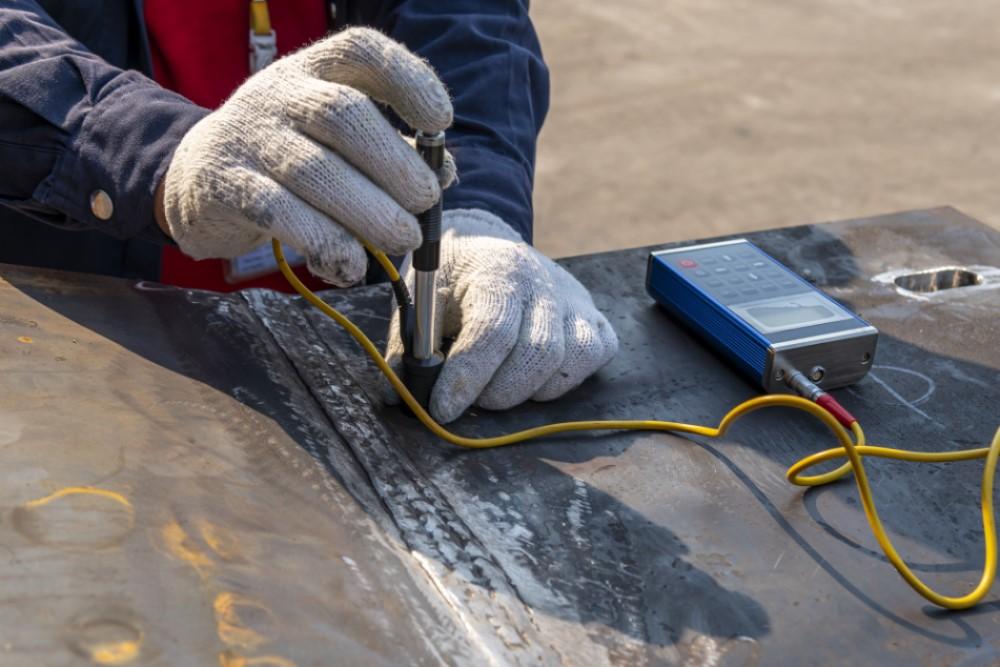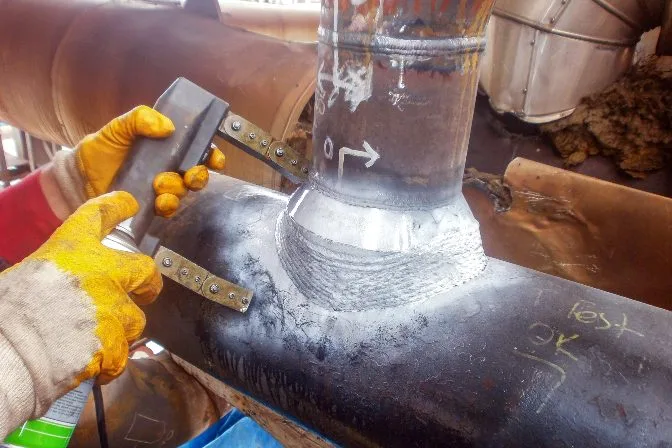A Comprehensive Guide to Recognizing How Welding Examination Works: Strategies, Specifications, and Ideal Practices for Quality Control in Metal Fabrication
Understanding the ins and outs of welding inspection is vital for maintaining the honesty of steel manufacture. Various methods, such as ultrasonic and visual testing, play a crucial function in recognizing potential problems, while adherence to established requirements makes certain compliance and resilience. Executing finest methods can dramatically boost top quality guarantee measures. However, the landscape of welding assessment is not without its difficulties. What complications arise in the field, and how can these be efficiently reduced? Checking out these facets reveals the deepness of this essential technique.
Relevance of Welding Assessment
Although welding is an important procedure in different industries, its honesty directly impacts the safety and efficiency of elements and structures. Efficient welding inspection is crucial for determining problems that can compromise the high quality and resilience of bonded joints. This procedure guarantees adherence to developed standards and specs, which are crucial for maintaining architectural stability and operational dependability.
Welding inspection offers several objectives, including validating that the welding process has actually been executed correctly, analyzing the high quality of materials used, and verifying that the ended up product satisfies governing and industry requirements (Houston Welding Inspection). Via rigorous assessment, potential issues such as porosity, fractures, and incomplete combination can be identified early, mitigating and preventing costly repair work security dangers
Additionally, regular welding examinations foster self-confidence among stakeholders, including designers, clients, and regulative bodies, by showing a dedication to top quality guarantee. The relevance of welding examination can not be overstated; it is integral not only for conformity with legal demands however likewise for improving the overall performance of bonded frameworks. Inevitably, a durable welding evaluation program is an aggressive action that safeguards versus failings, making sure the durability and dependability of welded components in their intended applications.
Typical Welding Examination Methods

Visual assessment is the first line of protection, enabling assessors to identify surface area defects such as fractures, damages, or incomplete combination. Radiographic screening utilizes X-rays or gamma rays to expose inner imperfections, making it excellent for complicated welds. Ultrasonic testing uses high-frequency acoustic waves to discover subsurface flaws, supplying accurate dimensions of weld stability.
Magnetic fragment screening works for ferromagnetic products, highlighting surface and near-surface stoppages when bits are related to a magnetic area. Alternatively, color penetrant testing utilizes a fluid dye to reveal surface-breaking defects, making certain that also the tiniest defects are detected.
Each strategy has its staminas and restrictions, usually necessitating a mix of methods for extensive evaluation - Houston Welding Inspection. By applying these assessment methods, quality control in steel manufacture is accomplished, ensuring that welded frameworks fulfill safety and security and efficiency standards
Industry Standards for Welding


The American Welding Culture (AWS) and the American National Requirement Institute (ANSI) are two noticeable companies that establish welding criteria. AWS D1.1, for instance, outlines the needs for welding steel structures, while AWS D1.2 concentrates on light weight aluminum. Internationally, the ISO 3834 typical addresses high quality requirements for combination welding, offering a structure appropriate throughout national boundaries.

Finest Practices for Quality Guarantee
Quality guarantee in welding is extremely important to attaining long lasting and risk-free building and constructions. Establishing an extensive quality monitoring system (QMS) tailored to the specific welding task is necessary.
Routine training and certification of welding employees are crucial for maintaining a skilled labor force. Constant education and learning on the most recent welding methods and technologies makes sure that inspectors and welders visit the website are knowledgeable about present criteria and practices.
Furthermore, performing pre-weld examinations to review products and devices can prevent flaws before they take place. Houston Welding Inspection. During the welding process, real-time surveillance and paperwork of welding criteria assist recognize disparities quickly. Post-weld evaluations need to involve complete examinations utilizing non-destructive screening (NDT) methods to make sure the honesty of the welds
Furthermore, maintaining clear communication among employee promotes a society of high quality. Regular audits and testimonials of the welding process aid recognize areas for enhancement. By adhering to these ideal techniques, companies can attain ideal quality control, ultimately bring about enhanced safety and efficiency in steel fabrication projects.
Obstacles in Welding Evaluation
Although welding evaluation is vital for guaranteeing structural honesty, it provides a selection of difficulties that can make complex the assessment procedure. One substantial obstacle is the irregularity in welding strategies and products used, which can affect the consistency of weld high quality. Different welders may employ varying methods, leading to inconsistencies that inspectors demand to identify and review.
One more challenge involves the discovery of flaws. Non-destructive screening (NDT) methods, such as radiographic and ultrasonic screening, can be complex and need competent technicians to translate results properly. Incorrect positives or negatives can occur, possibly causing pricey rework or endangered safety and security.
Additionally, the presence of environmental elements, such as temperature and moisture, can influence the stability of welds and the effectiveness of inspection techniques. Examiners need to additionally browse the governing landscape, making certain compliance with market requirements, which can differ by territory and look at this web-site application.
Final Thought
To conclude, welding inspection plays a crucial role in making sure the honesty and safety and security of steel manufacture. Using a selection of assessment methods, adhering to established market standards, and carrying out efficient high quality management practices collectively enhance the integrity of welded frameworks. Despite the difficulties encountered in the evaluation procedure, a commitment to continuous renovation and adherence to finest techniques can significantly reinforce the high quality assurance framework, cultivating higher confidence amongst stakeholders in the welding market.
Effective welding inspection is essential for determining issues that can endanger the quality and longevity of welded joints.In addition, regular welding assessments foster confidence among stakeholders, including designers, clients, and regulative bodies, by demonstrating a dedication to top quality guarantee.The American Welding Culture (AWS) and the American National Standards Institute (ANSI) are two prominent organizations that establish welding standards. During the welding process, real-time monitoring and paperwork of welding parameters assist identify disparities right away. In spite of the difficulties faced in the evaluation process, a dedication to continuous renovation and adherence to best methods can significantly bolster the quality assurance structure, cultivating better self-confidence amongst stakeholders in the welding industry.